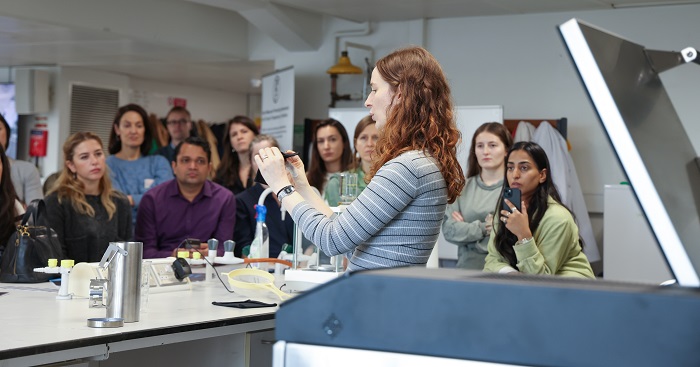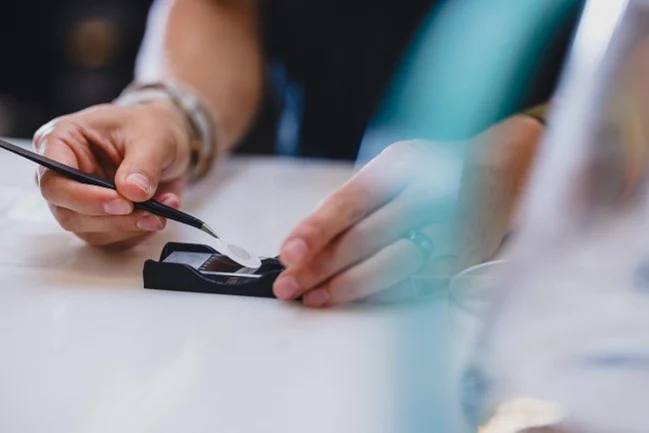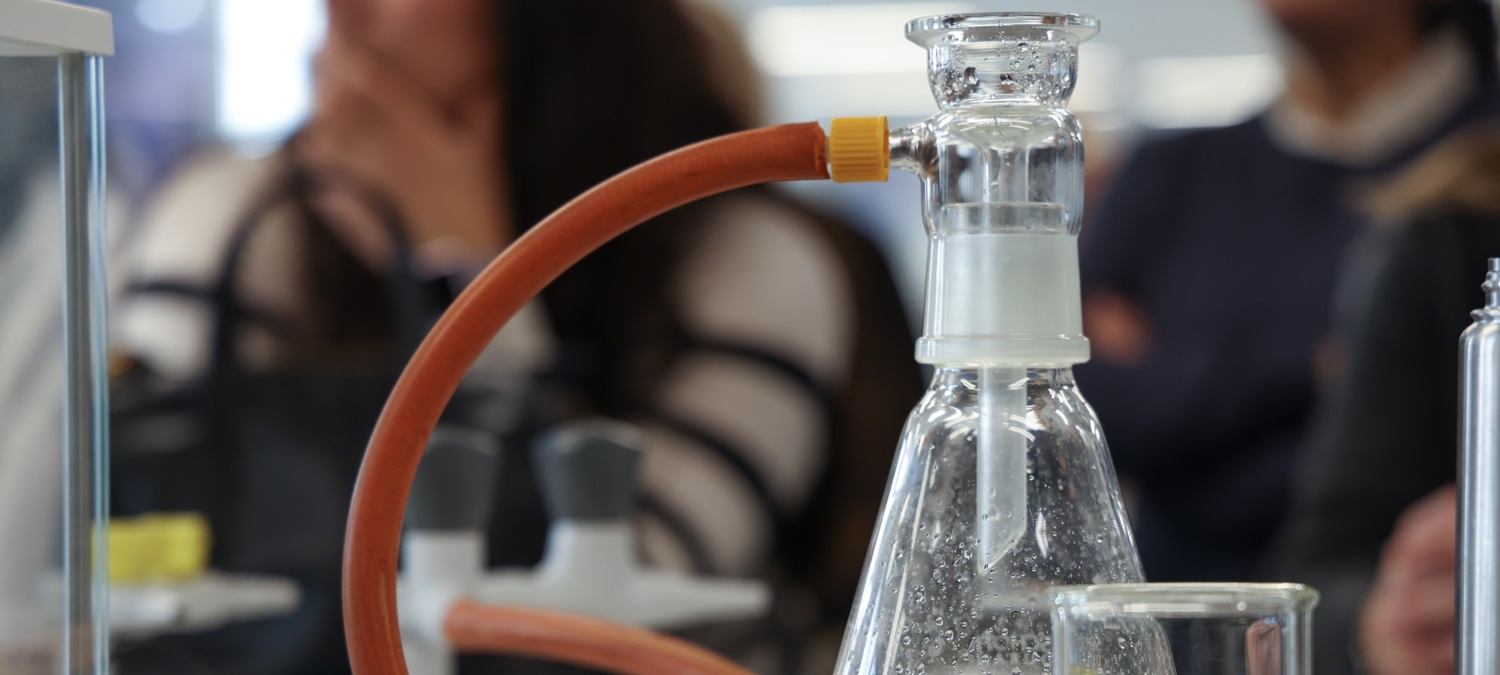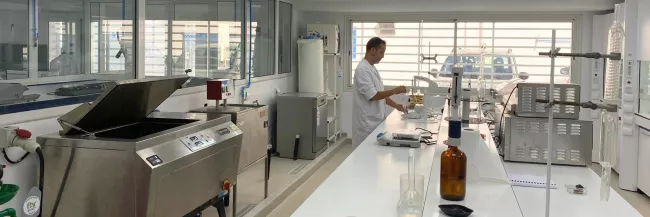Following our collaboration with The Microfibre Consortium (TMC) on the demonstration of measurement of fibre release from textiles using the James Heal GyroWash, and the subsequent release of the TMC test method and ISO standards, we are receiving many questions from the industry on this topic.
From the event in October 2023 where The Microfibre Consortium test method was first publicly demonstrated on the James Heal GyroWash as part of The Textile Exchange annual conference, we have seen increasing interest in this whole area of textiles testing and analysis.

Summary of test methods
To help explain the facts and dispel some of the myths, we thought it would be helpful to set out the main differences between some of the current test methods available, particularly for ISO 4484, which has been a popular theme to the questioning.
- ISO 4484-1 - Determination of material loss from fabrics during washing
- ISO 4484-2 - Qualitative and quantitative analysis of microplastics
- ISO 4484-3 - Measurement of collected material mass released from textile end products by domestic washing method
These three standards are now available from the International Standards Organisation (ISO).
ISO 4484-1 - Determination of material loss from fabrics during washing
Purpose
To test the fibre loss during the whole washing process
Equipment
James Heal GyroWash plus vacuum filtration system kit
Test method and results
The fabric is tested in a machine which replicates the motion and agitation of a washing machine, such as the James Heal GyroWash. The test is used to find out how much fibre, by weight, is lost during a cycle of washing.
It can be used to identify if one fabric performs better than another including the same material from different sources, one fabric compared to a competitor, a chemical finish or dyestuff applied to the fabric. It can also be used to see how repeated washing affects the loss of fibres.
Background
The James Heal GyroWash was used in the comprehensive research by the University of Leeds, which led to the development of the TMC test method. The GyroWash does not need any modification to undertake the washing part of the testing - view the research article.
An additional test kit for performing the measurement of fibres released in conjunction with GyroWash for the TMC test method relating to the ISO 4484-1 standard, is available to purchase from James Heal - contact us for details.
ISO 4484-2 - Qualitative and quantitative analysis of microplastics
Purpose
To identify the fibre type and density of a yarn by analysis
Equipment
Filtration system plus various chemical solutions
Test method and results
Chemicals are used to separate polymer fibres in a yarn to be filtered and analysed. The test is used to determine how many microplastics are used to make up a yarn by filtering through several different sized filters, and visually counted. Quantity and size of polymers are reported to demonstrate how much microplastic would be lost by a particular yarn during its whole lifetime.
ISO 4484-3 - Measurement of collected material mass released from textile end products by domestic washing method
Purpose
To determine how much fibre is expelled from a fabric through a washing machine outlet hose
Equipment
Domestic washing machine, filter bag plus vacuum filtration system
Test method and results
A domestic washing machine is used to find out the quantity of fibre, by weight, would be lost into the outlet pipe of a domestic washing machine during a wash. This can be used to identify how much fibre would potentially be released into the waste water bound for water treatment facilities through washing. The test can be repeated to collate the amount of fibre lost during multiple wash cycles.
Other microfibre shedding test methods
Research is ongoing and the overall understanding of this issue and how to tackle it continues to evolve.
In addition to the ISO standards there are a number of other industry bodies and brands who have developed or are developing standards and test methods for the measurement of fibres shed from fabrics and garments to consider.
AATCC TM212-2021 - Test method for fiber fragment release during home laundering
AATCC TM212 provides a standardised method for quantifying fibre fragment shedding. The James Heal GyroWash can be used to do the washing part of the testing for the test method AATCC TM212.
The AATCC test method was developed in collaboration with many industry experts and other organisations, including The Microfibre Consortium, and is available to purchase via the AATCC website.

Under Armour fiber shed test method
Under Armour has developed their own test method with the continued support and technical guidance from testing service provider Hohenstein, an internationally recognised testing and certification leader within the textile sector.
The Under Armour fibre shed test method and kit is a stand-alone set of equipment incorporating all the items needed to undertake testing. It intended to provide wider access to a quick and inexpensive way of performing this testing, particularly for supply chain manufacturing companies. Assessment of the results from the test is visual.
James Heal and Under Armour have worked on different projects for many years. When Under Armour approached James Heal about their fibre shedding assessment project, we were happy to be the supplier for distribution of their fibre shedding kits, in order to help them achieve their goal to further reduce and ultimately eliminate fibre shedding in manufactured materials.
The kits, which include the test method, are available to buy from James Heal - contact us for details.
Hohenstein
As an internationally recognised testing and certification organisation, Hohenstein has also been involved in the research and development of testing in this field. For further reference, information can be found on their website covering microfibre impact assessment and related test methods.
Considerations
As a key takeaway from this brief overview, there is much to take into account when considering which testing is most appropriate to your particular product evaluation, and numerous variations between all the different types of testing to think about. It may be for example, that your region demands a particular standard, for example ISO is likely to be more relevant in Europe, but as outlined there are the three options to select from within that.
We will continue to watch the market for new developments and give further updates as these arise. Hopefully this information has provided some useful initial insight into this fast-evolving area of materials evaluation, and further raised awareness of the need for testing as input into product research and development, and highlighted the need for supply chain monitoring.

Get in touch
To find out more about measurement of microfibre release testing, GyroWash, and the two types of microfibre shedding measure kits we have available, contact our team.












